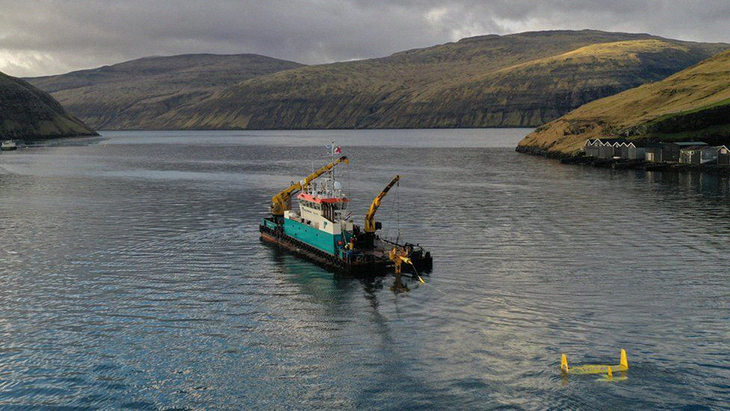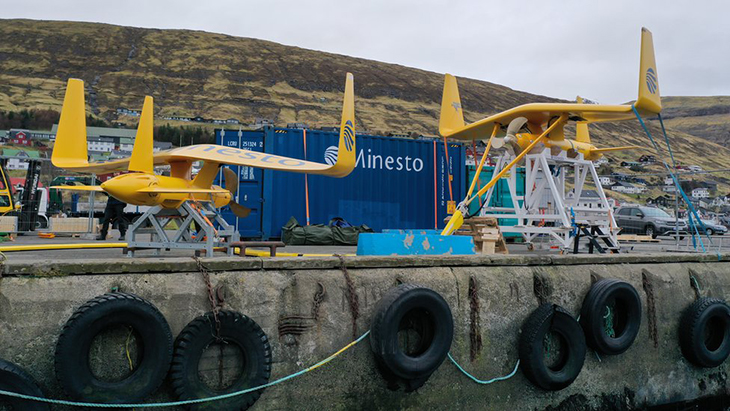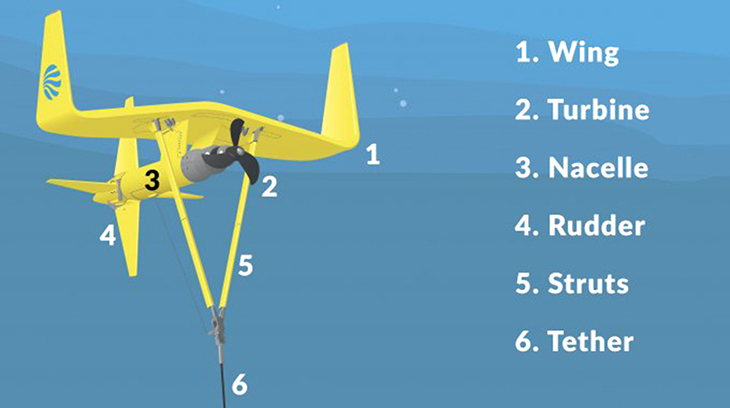
If you visit the Faroe Islands, you might come across pairs of sleek winged machines that float beneath the dark waters of the North Atlantic Sea. These serve a purpose. The people have opted to go green when it comes to the use of electricity.
So, what do you do when you want to save the environment but you have to contend with limited resources? Easy. You simply turn to nature for help. She has so much to offer, and it’s simply time that you think outside the box. This is exactly what the residents of Faroe Island did.

When there’s plenty of sky to look at, but hardly any sun, you can’t really rely on solar power. When you get gusts of wind throughout the day, but no space to build windmills, then you might assume you’re your resources are quite limited. The people of Faroe Islands have searched for better sources of renewable energy, and it looks like they finally found it.
They simply looked to their Viking origins and built the Sea Dragons as an answer to their conundrum, and it has worked to their advantage.
The Sea Dragon is a class of its own as it makes use of a unique form of kinetic energy. They generated power with the help of the movement of the tides. These wonderful inventions are found 40 meters below the surface. In essence, they look like underwater kites or gliders built with an impressive 16-foot wingspan. Once under, they swim in a figure of eight position along with the water’s tide. The movement generates energy large enough to provide power to around 50 to 70 homes.
The Faroe Islands houses around 50,000 people. This may not sound much, but the residents consume enough electricity to make an impact. The place is a self-governing Danish archipelago and it is found between Iceland and Shetland. When you think about it, the area is known to go green and you’d be hard-pressed to believe that the area is an easy place to reach a zero-emissions target. You, however, couldn’t be further from the truth.
Unfortunately, the North Atlantic weather can be quite challenging. Moreover, there’s not too much surface on land to allow them to build wind turbines. For now, hydro-electric power provides more than 40 percent of the island’s energy supplies.
Hence, the Sea Dragon. This was built by Minesto, which is a spin off from the parent company of airplane and (former) car manufacturer Saab. Otherwise known as the “tidal kites,” the Sea Dragon works by make use of the lift force of the tide. This is much like how an airplane works as it uses the force of air passing over its wings to fly.
This wonderful piece of technology comes with onboard control system and rudders. The kite that’s placed on the water is autonomously steered in a pre-determined pattern. The tide in the area pushes it through the sea while making sure that it’s anchored to the seafloor with a tether. The new method allows the turbine to experience a water flow that is much higher than the actual stream speed.

As the turbine moves, it then diffuses power to the generator. Then, electricity is transmitted via a power cable in the tether up to a station that’s found on land. The tidal kites work in conjunction with the marine environment in a predictable way. Moreover, it is extremely low in environmental impact. Because Faroe Islands is considerably a tiny island chain, it uses up no space on land aside from the receiving power station.
“The new kites will have a 12-metre wingspan, and can each generate 1.2 megawatts of power [a megawatt is 1,000 kilowatts],” said Martin Edlund, CEO of Minesto as he explained how the kites work to the BBC. He also said, “We believe an array of these Dragon-class kites will produce enough electricity to power half of the households in the Faroes.”
As the islands shift to winter from an unusually windless summer, the people were forced to import much more diesel than needed. However, since the installation of wind turbines, the tides produced in the area has been quite amazing for them. Minesto, in fact, believes their dragons could provide as much as 600 gigawatts low-impact, low-cost, renewable energy around the world. That is, if the project will be scaled up.
We can only hope that this happens and that everyone on the planet can finally take the alternative energy route that the earth badly needs.
What are your thoughts? Please comment below and share this news!
True Activist / Report a typo


